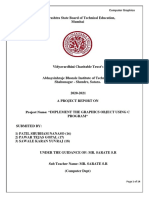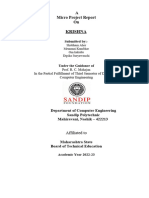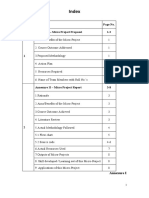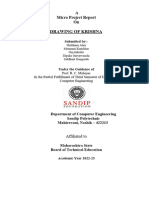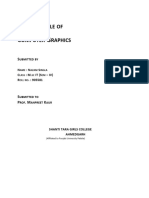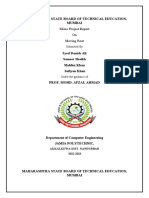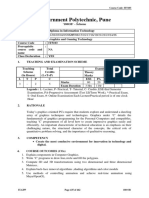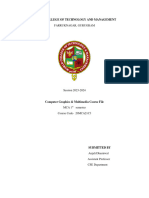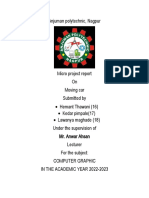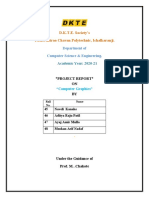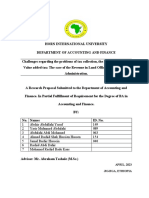0% found this document useful (0 votes)
33 views10 pagesCGR MProject.
The micro-project report titled 'Running Train' focuses on the application of computer graphics techniques to create a visual representation of a train using programming. The project was completed by students Damini Avinash Jagtap, Mohini Sunil Patil, and Tejaswini Nitin Nikam under the guidance of Ms. Apeksha Barhate at SHHJB Polytechnic, Chandwad. The report outlines the course outcomes achieved, the algorithms used, and the resources utilized in the development of the project.
Uploaded by
sayalipawar757Copyright
© © All Rights Reserved
We take content rights seriously. If you suspect this is your content, claim it here.
Available Formats
Download as DOCX, PDF, TXT or read online on Scribd
0% found this document useful (0 votes)
33 views10 pagesCGR MProject.
The micro-project report titled 'Running Train' focuses on the application of computer graphics techniques to create a visual representation of a train using programming. The project was completed by students Damini Avinash Jagtap, Mohini Sunil Patil, and Tejaswini Nitin Nikam under the guidance of Ms. Apeksha Barhate at SHHJB Polytechnic, Chandwad. The report outlines the course outcomes achieved, the algorithms used, and the resources utilized in the development of the project.
Uploaded by
sayalipawar757Copyright
© © All Rights Reserved
We take content rights seriously. If you suspect this is your content, claim it here.
Available Formats
Download as DOCX, PDF, TXT or read online on Scribd
/ 10


